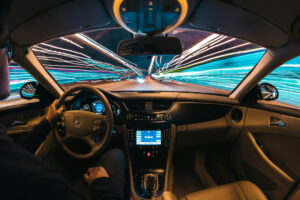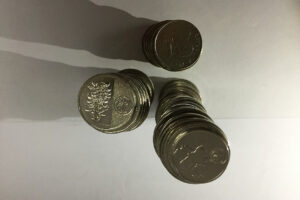Switches vs touch screens

The idea of transitioning to electric vehicles (EVs) for everyday use is gaining traction for me, driven by two main factors: improvements in EV range and usability, and the prospect of lower operating and maintenance costs. Recent discussions with dealerships regarding warranties and after-sales support have also provided additional reassurance.
It all began with a test drive last year, when I got behind the wheel of a fully electric Audi Q8 and navigated it through some water at wading depth. This experience boosted my confidence in EVs’ ability to handle Phil-ippine roads. Reports about logistics companies shifting to EV fleets have also reinforced my belief in the feasibility and practicality of EV adoption.
Despite the current higher price tag of EVs compared to traditional cars, hybrids emerge as a more practical alternative, especially for households limited to owning just one vehicle. Additionally, the exemption from number coding until 2030 for both EVs and hybrids serves as a compelling incentive for one who lives in Makati City, where there are no coding window hours.
The Audi Q8 tryout, courtesy of former BusinessWorld colleague Brian Afuang, also highlighted to me the impact of technology on modern motoring. As I commented in a previous column, with so much high technology in cars nowadays, it was only last year — after over 36 years of motoring — that the driving experience has become totally different for me: I felt a lot less in control.
To an extent, modern cars now feel more like driving a smartphone. While computers controlled mostly engine functions in the past, they now control most everything else in vehicles save for the steering wheel itself. Self-driving cars exist, units that run on autopilot, but they are not prevalent yet here on our shores.
It was thus unsurprising, at least to me, that there is now an ongoing debate over the use of touch controls in modern cars. And recent developments suggest that the era of touch controls may soon be on the reverse. Some studies underscore concerns about cars becoming excessively high-tech, particularly due to the proliferation of large in-car touch screens.
Touch screens have raised safety apprehensions, prompting pressure on automakers to reintroduce physical controls just so they can keep the highest safety ratings. Organizations like Euro NCAP or the European New Car Assessment Program have decided to put the brakes on high technology by lowering the safety ratings of vehicles lacking essential traditional controls for items like turn signals and hazard lights.
The issue is how touch screens and touch controls tend to distract drivers, thus the seeming endorsement of the safety advantages offered by intuitive physical controls. Some automakers are said to be reintegrating more traditional controls into their vehicles or are opting to maintain straightforward layouts with dashboard shortcuts.
Overcompensating is also a possibility, with some car makers reportedly ending up with an abundance of buttons and knobs. Balance is still the aim, however, by incorporating customizable screens with physical switches or dials. Frankly, despite the Euro NCAP initiative, I believe that touch screens will continue to remain a common feature of modern-day vehicles.
One can understand Euro NCAP’s concern over possible safety hazards associated with excessive touchscreen use, particularly the need to take the driver’s hand off the wheel and his or her eyes off the road. Bringing back physical switches or controls may aim to prioritize safety, but in my opinion, this will not necessarily reduce driver distraction.
Then there are insinuations that touch screen controls are cheaper to produce and easier to install than traditional switches and controls. In a way, they favor manufacturers as they can be more efficient as well with elec-tricity usage, with their electronic components requiring low voltage and low current. This allows the production of smaller and lighter, and perhaps cheaper, vehicles.
But if a carmaker is particular about keeping or improving safety ratings, in the hope that the high rating will help sell more vehicles and at the same time reduce manufacturer liability, then a return to buttons and dials may be the course. But, if carmakers are confident of the safety of their vehicles despite the use of touch screens, then not much may be expected by way of design changes.
Of course, given economies of scale, and production efficiencies, global brands will not be inclined to produce cars specific only to the Euro market. Separate interiors for different regions will not be practical. So, if Euro cars undergo changes, then this might affect non-Euro cars as well. For sure, global car makers will move to strike a balance between high-tech and traditional controls.
The Euro NCAP initiative will certainly impact the future of touch controls. At the very least, in-car interfaces will undergo greater scrutiny. Touch-screen related failures and accidents will be monitored and reviewed. Other than safety, consumer preference for capacitive touch buttons or tactile controls will also be considered in the light of design, modernity, and usability.
But given changes in preferences particularly among younger consumers, and the shift to touch controls for most everything else, I reckon that touch screens will continue to be a central feature of modern car design. What can emerge from all this is a more balanced approach that incorporates touch controls with necessary physical buttons.
The industry will go through a transition, yet again. And the future of in-car controls is likely to be shaped by a combination of safety considerations, consumer preferences, and technological innovation. Car design has been evolving since the first mass-produced automobile rolled off the Ford factory in 1908. And it will continue to change with the times, for sure.
Marvin Tort is a former managing editor of BusinessWorld, and a former chairman of the Philippine Press Council.




